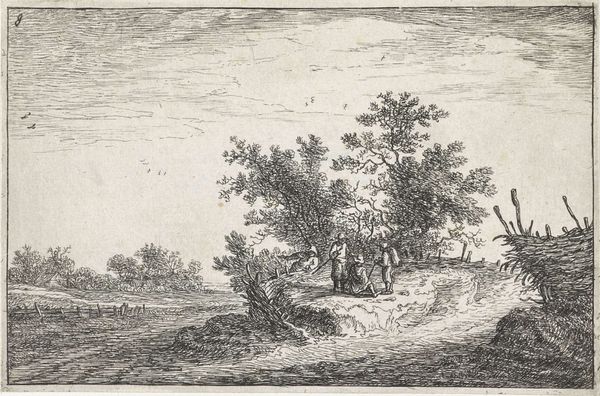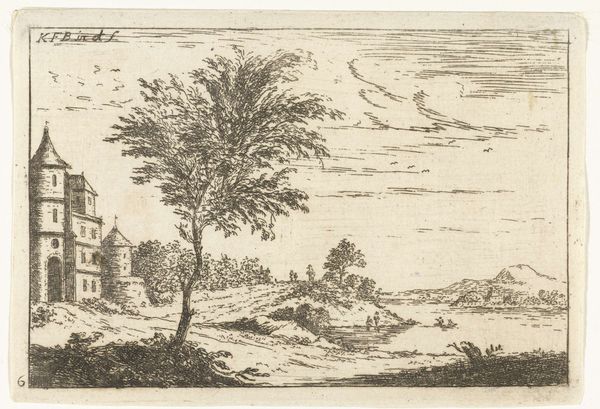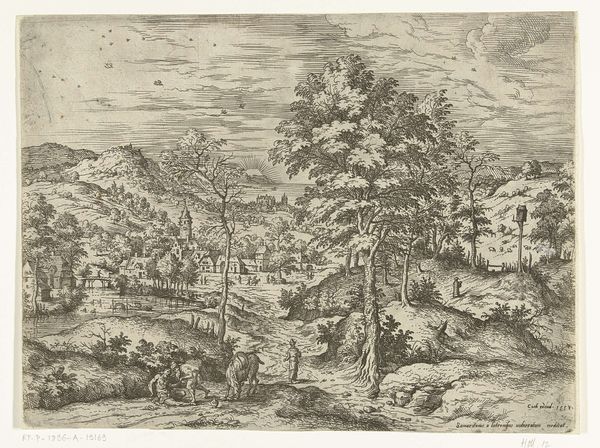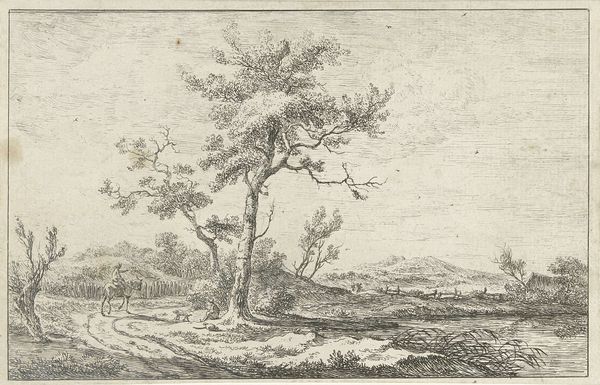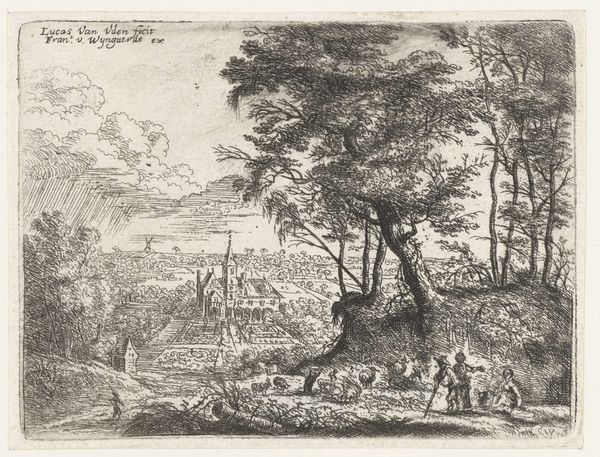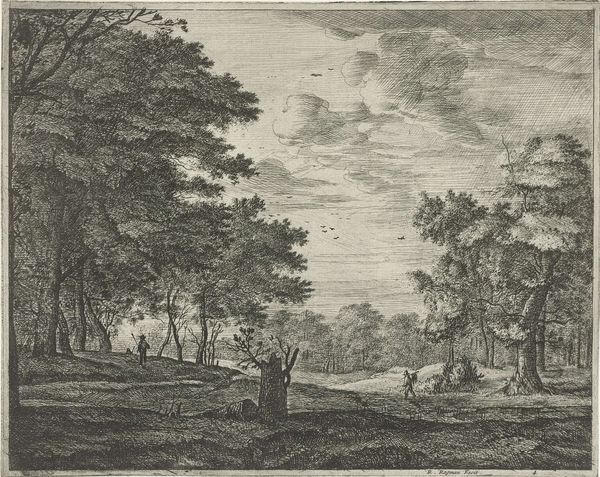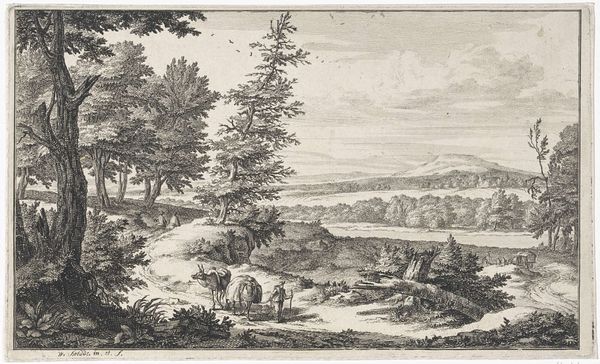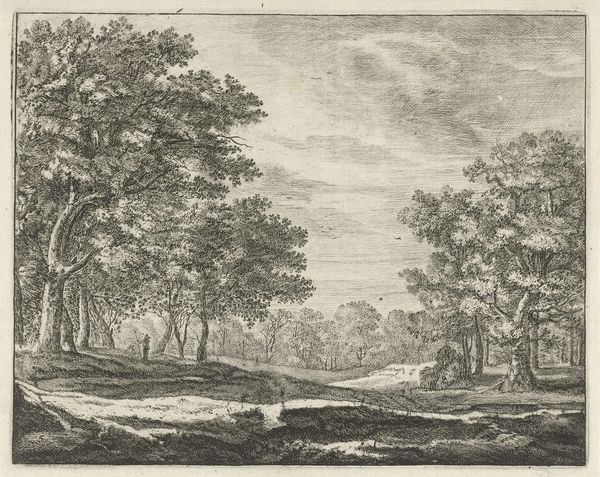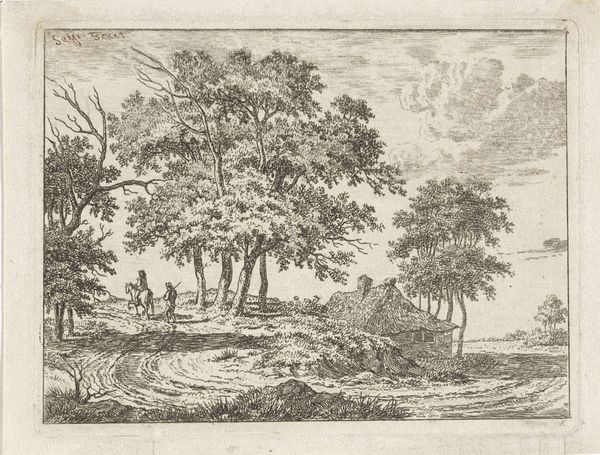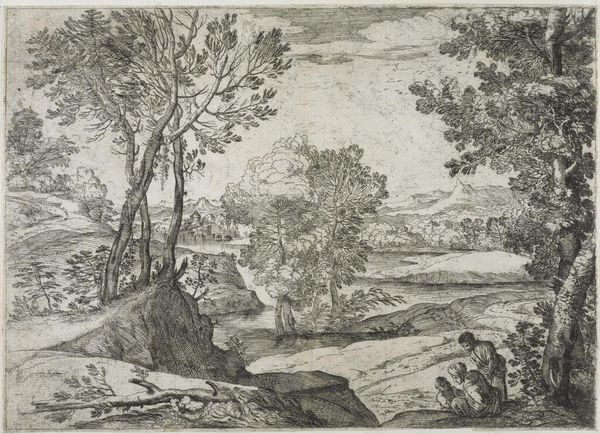
print, etching
#
dutch-golden-age
# print
#
etching
#
landscape
#
river
Dimensions: height 131 mm, width 211 mm
Copyright: Rijks Museum: Open Domain
Curator: This is "Riviergezicht bij Maarsseveen," a riverside view near Maarsseveen. It's an etching, part of Roelant Roghman's body of work from the Dutch Golden Age, dating roughly from 1637 to 1677. Editor: It has such a delicate quality. The shading is almost like a pencil sketch, and it projects a serene and rather quiet mood. The water's reflections add another subtle layer of detail. Curator: Roghman was working during a period of great social and political upheaval, and prints like this helped define a sense of Dutch identity, deeply connected to the land and waterways, emphasizing the relationship of a rising merchant class to natural spaces, suggesting ideas about ownership and recreation. The very act of naming the specific location roots the artwork in a particular geographic context. Editor: The birds overhead, the figure walking by the river – those details trigger associations of journey, reflection, or observation. Bird symbolism could signify messages from the heavens, or simply be a symbol of freedom and being free of society's shackles. I also see that there's more activity indicated further back, closer to the forest edge. It's as though human interaction with nature unfolds across this carefully delineated landscape. Curator: It also speaks to access. Who is able to utilize these spaces? The artist chooses to frame the land and river as available to all, but there were most likely constraints influenced by social status at play. What are your thoughts on how nature becomes a vehicle for social commentary, intended or unintended? Editor: Yes, landscape isn’t just a scenic backdrop. The textures—the density of the woods versus the openness of the river and sky—create a strong visual and emotional counterpoint. This detailed focus suggests an almost dream-like rendering of a specific place. Curator: A beautiful way to put it. Thinking about the artwork in terms of gender and social hierarchies invites further questions. Is Roghman presenting an idealized or aspirational view of society, one that centers nature? Editor: To wrap up, I think the lasting resonance is how it subtly draws you in and evokes a deep tranquility, a reminder that some fundamental human experiences are really anchored in observation of our physical environments. Curator: And perhaps also the continuous process of questioning these environments, and our place within them, as reflected in art.
Comments
No comments
Be the first to comment and join the conversation on the ultimate creative platform.


